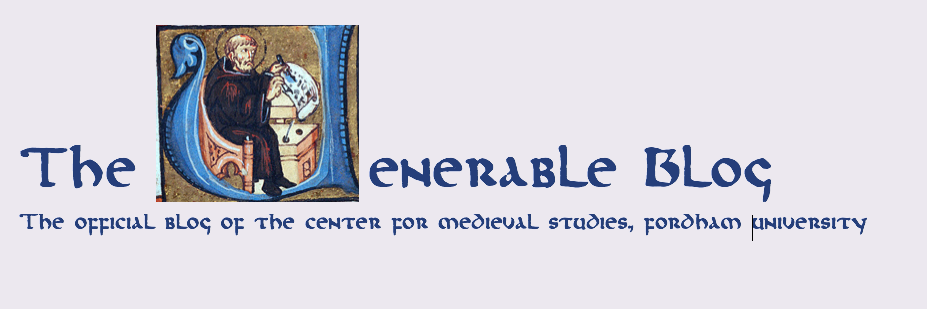This past 30th of September, Dr. Robin Fleming gave a lecture in the New York Botanical Gardens’ Mertz Library as part of the first day of this year’s Biduum Latinum on the Roman importation of plants and animals to Britain during its brief time as a part of the Empire and the impact this practice had on Britain’s material history. Fleming began her “Vanishing plants, animals, and places: Britain’s transformation from Roman to Medieval” with a lament that the people she most often wants to learn more of in historical accounts and existing records are not actually mentioned by or visible in those very records. To find out more about those who are silent in the written record, she went to look to the physical, archaeological evidence of their actions and, specifically, what they did with Roman imports. We know from the written record that certain spices, fruits, vegetables, and even livestock were imported, but it is from the archaeological evidence that Fleming observed what these things were used for and by whom.
Looking to the period of Roman withdrawal from Britain in the 4th-5th centuries CE, Fleming put forward that the over-all impact this withdrawal had was a material one. Noting a trend in the study of the de-Romanization of Britain, which presents the Roman withdrawal as having only a political and social effect on the urban elite, Fleming presented ample archaeological evidence that the immediately felt impact of the lack of a Roman presence in Britain was tied specifically to the loss of consistent Roman imports, which had penetrated every level of British society. From the rural villager to the proud owner of a country villa and the urban elite, Roman imports formed a substantial, or, at least, noticeable portion of one’s diet. From chicken to coriander, Roman imports can be seen in the diets of peoples spanning every level of the social spectrum. Fleming bases this on evidence collected from excavated cesspits found across Romanized Britain. Fleming believes even some native plants such as strawberries, thought to be inedible by British Celts, were, via Roman influence and interest in this exotic new taste sensation, introduced to consuming these berries on a daily basis.
The Roman influence did not end with the expansion of the British diet. The Romans brought also such practices as grafting to the Isles, and Roman land-owning elite had constructed massive granaries to hold, in as conspicuous as way as possible, their vast wealth of food, harvested from ever-expanding fields of what were previously grasslands or floodplains. Showing that influence was not unidirectional, the Roman villa of Britain was itself constructed in a similar manner as a rural villager’s home, albeit at a much grander scale with some distinctly Roman decoration. The archaeological record shows thatched roofs, straw-covered pounded dirt floors, and sparse tiling display what it was the Roman landed elite called home, in a far cry from what their fellow citizens of a similar social standing would have known on the continent. We even see, in Kent, a small port attached to a brewery obviously meant to export British beer to the continent.
What, then, came of these Roman introductions after the withdrawal? From the archaeological evidence, Fleming believes most of the plants and animals imported died off without continuous Roman cultivation and husbandry and constant replacements being brought in by ship. Most of these alien flora and fauna were not kept in large enough quantities to spread naturally from the abandoned gardens or breed beyond the confines of Roman hunting grounds. In fact, we see a sharp spike in the consumption of foraged food after the period of Roman rule comes to an end in Britain. The plants and animals currently thought of as British staples were reintroduced in the Middle Ages with the reemergence of trade with the continent and the import of materials and people coinciding with the rise of monasticism (and monastic gardens) in the Isles. However, this should not be taken as indicative of a decline in the health of the average Britain, as, in lieu of landlords demanding the majority of what one produced, families were able to grow food entirely for themselves, adding what was foraged to that and resulting in a, generally, healthier individual, as shown by the larger, more robust skeletons we see dating to after the Roman withdrawal.
Noting the anthropological theory that, while people make things, things also make people, Fleming presented the Roman rule and withdrawal from Britain as signifying two major shifts in British material history. As the needs of cultivated plants and livestock require humans to alter their own schedules to provide the time to meet those needs, and humans often base their own social standing on their acquisition and holding of such things, shifts in material history inevitably denote shifts in political and social history. Fleming’s intertwining of textual sources and archaeological evidence provides a window into how exactly material changes alter every facet of human society and interrelations.
The Center would like to graciously thank Dr. Fleming for beginning the Biduum on an excellent note, and the New York Botanical Gardens for hosting the event and providing the perfect environment for our study of Roman and Medieval botany.


